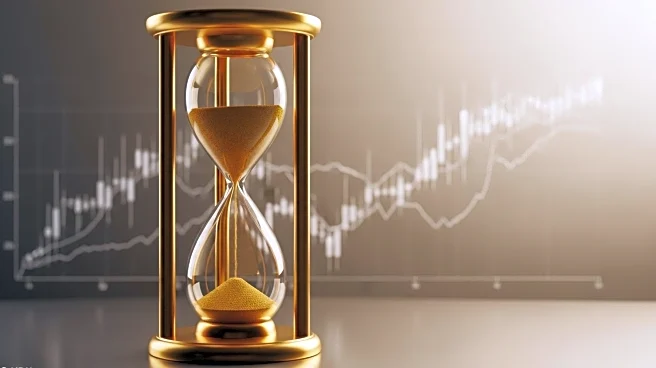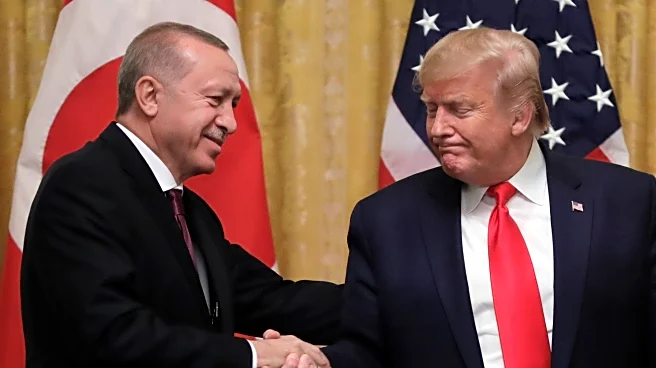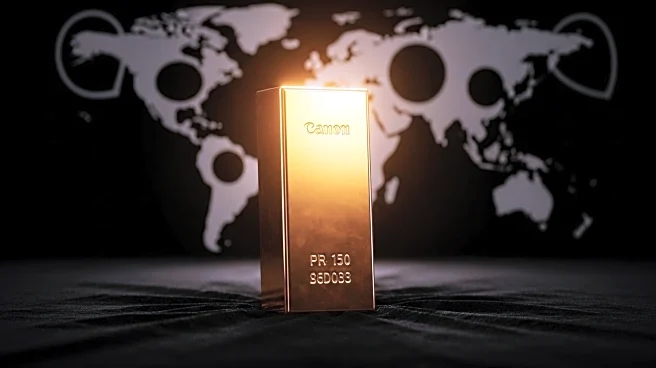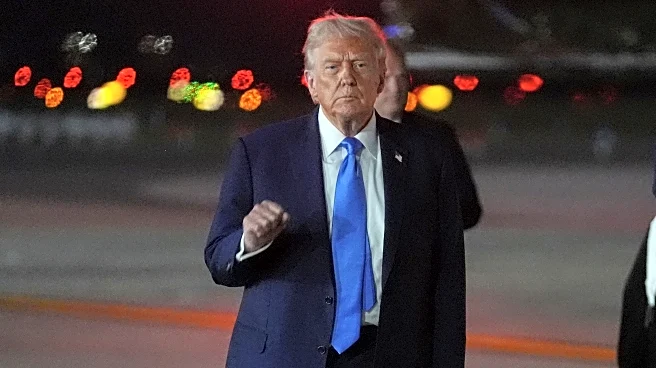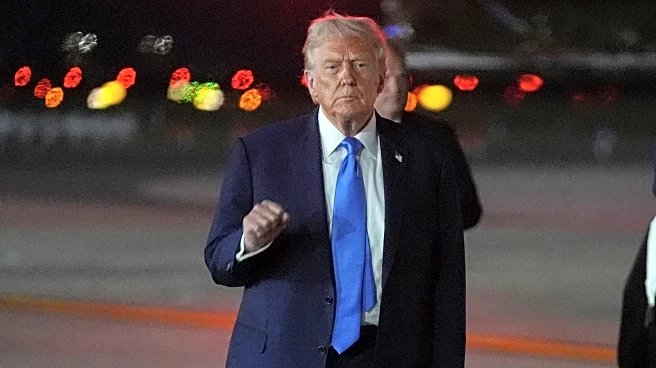What's Happening?
Gold prices have stabilized near their record high, driven by expectations of further U.S. interest rate cuts and ongoing geopolitical uncertainties. Spot gold was trading at $3,762.73 per ounce, following a peak of $3,790.82. U.S. gold futures for December delivery saw a slight decline, trading at $3,795.80. The dollar index rose, making gold more expensive for holders of other currencies. Analysts attribute the rally to lower U.S. funding costs and investor concerns over equities, Fed independence, and geopolitical risks. The market is anticipating two more rate cuts this year, with probabilities of 94% and 77% for October and December, respectively.
Why It's Important?
The stabilization of gold prices near record highs reflects broader economic and geopolitical dynamics. As a safe-haven asset, gold tends to perform well in uncertain times, particularly when interest rates are low. The anticipation of further rate cuts by the Federal Reserve could bolster gold's appeal, impacting investment strategies and financial markets. Geopolitical tensions, such as NATO's stance against Russia and President Trump's comments on Ukraine, further contribute to the demand for gold. This situation underscores the interconnectedness of global politics and economic policies, influencing commodity markets and investor behavior.
What's Next?
Investors are closely monitoring upcoming economic indicators, such as the U.S. Personal Consumption Expenditures index, for further cues on potential rate cuts. The Federal Reserve's decisions will be pivotal in shaping gold's trajectory. Additionally, geopolitical developments, particularly involving Russia and Ukraine, could further impact market sentiment. Analysts suggest that gold may consolidate above $3,750 in the short term, with potential resistance around $3,900. Stakeholders, including investors and policymakers, will need to navigate these complex dynamics as they unfold.


